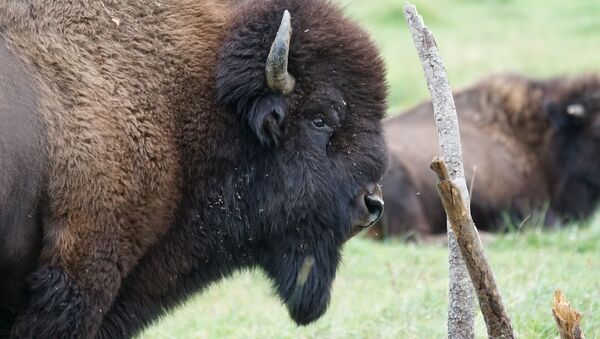The transfer, which has taken two years to arrange, is part of Russia's plan to revive the majestic species that has been teetering on the brink of extinction for decades. The goal is to have several large flocks in different parts of the country, strong enough to survive both environmental threats and genetic problems in the future.
The Swedish bison are considered to be good genetic material, which has made them coveted items in the Russian project. By next spring, half of the flock will be released into the wild in the Turmonsky Natural Reserve in North Ossetia, intended to become the backbone of the future population. The rest will stay in the Oksky Natural Reserve in the Ryazan Region south of Moscow for breeding purposes.
"They will be tranquilized and loaded on two large trucks. Then there'll be a ferry ride to Lithuania and further east to the Oksky Natural Reserve south of Moscow as the first stop," Ola Jennersten, conservation expert at WWF Sweden told national broadcaster SVT.
Jennersten also stressed the role of bison as major herbivores in maintaining open landscapes, preventing them from overgrowing with grass.
"The bison's grazing allows other animals and plants to establish themselves. Without the bison, only grass grows," Jennersten explained.
#зубр #беловежскаяпуща pic.twitter.com/cEKjsNmwm9
— Staliarchuk Vadim (@staliarchuk) 25 сентября 2016 г.
The European bison, also known as wisent, is Europe's largest herbivore. In the past, they lived all over Europe, but became almost extinct due to hunting and shrinking habitats as well as deforestation and urban exploration. In 1927, when the last wild bison was shot, only some 50 bison were left in various preserves. Since then, however, great strides have been made to re-introduce the bison into the wild. Today, the European bison population is estimated at about 4,000 animals.
Зубр выбран экологическим символом Калужской области в 2018 году https://t.co/3xPMja42fi
— Газета Знамя (@znamkaluga) 14 сентября 2017 г.
#Калужская_область #зубр pic.twitter.com/IBh2jzIrm1
Free-ranging herds are currently found in Poland, Lithuania, Belarus, Ukraine, Romania, Russia, Slovakia, Latvia, Kyrgyzstan, and Germany. Białowieża Forest, one of the last and largest remnants of the vast primeval forest that once stretched across the European Plain and is now shared between Belarus and Poland, is home to 800 wild bison.
Russia's own bison population is estimated at 500, dispersed over the Oka basin, Smolensk and Bryansk Regions in European Russia, North Caucasus, the Altai Mountains and the Yakutia Republic in Siberia.
READ ALSO: Hornswoggled: Finnish Broadcaster Under Fire Over Fake Soviet 'Battle Moose'
Выпуск бизонов на волю. The release of the Buffalohttps://t.co/FLic0kNDeN#Выпуск бизонов,#Бизоны,#Якутск,#Лесные бизоны,#Зубр,#Дикие бизоны, #Бык,#Тымпынай,#the release of bison,#Bison,#Russia,#Yakutsk,#Wild bison,#Buffalo,#Buffalo coat,#Leptobos, pic.twitter.com/spoJNmoTqF
— Инцидент Инцидент (@ltyU7CDKOvwsgw9) 26 ноября 2017 г.
A typical bison is up to 3.5 meters long and 2 meters high. Occasionally big bulls are known to weigh up to a ton or even more. Bison are herd animals mostly living in mixed groups.
Зубровник, республика Алтай#зубр #питомник #зубровник #природа #животные #animals #Altay #nature #wild_nature pic.twitter.com/vc493iptrU
— Мария Вакалюк (@Enchantress795) 13 апреля 2017 г.





